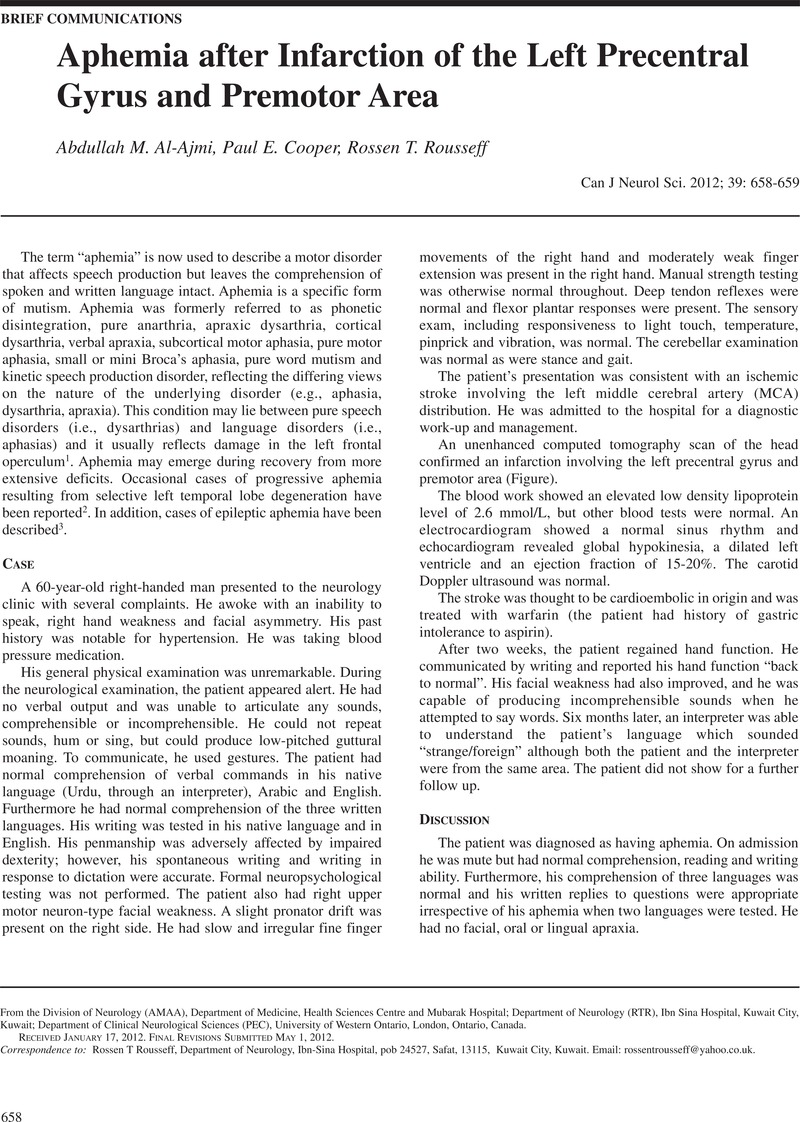Crossref Citations
This article has been cited by the following publications. This list is generated based on data provided by Crossref.
de Oliveira-Souza, Ricardo
Moll, Jorge
and
Tovar-Moll, Fernanda
2016.
Broca’s Aphemia: The Tortuous Story of a Nonaphasic Nonparalytic Disorder of Speech.
Journal of the History of the Neurosciences,
Vol. 25,
Issue. 2,
p.
142.
Tsukada, Tsuyoshi
Kubo, Michiya
Okamoto, Soshi
Hirao, Masato
and
Horie, Yukio
2023.
Intravenous Thrombolysis Improved Aphemia and Confirmed the Dominant Precentral Gyrus as the Responsible Lesion.
Cureus,



